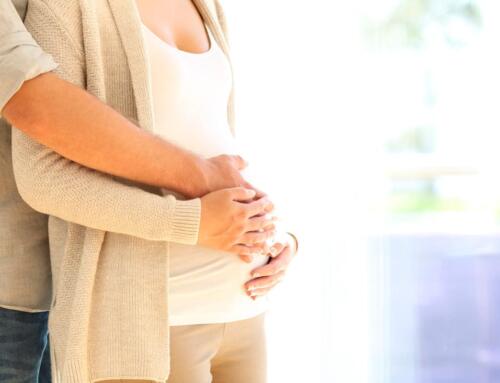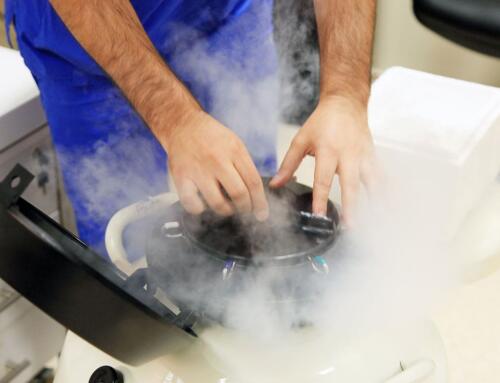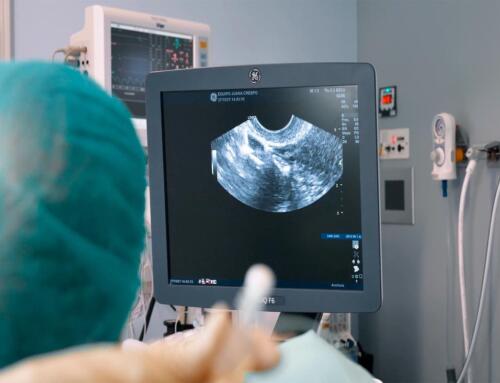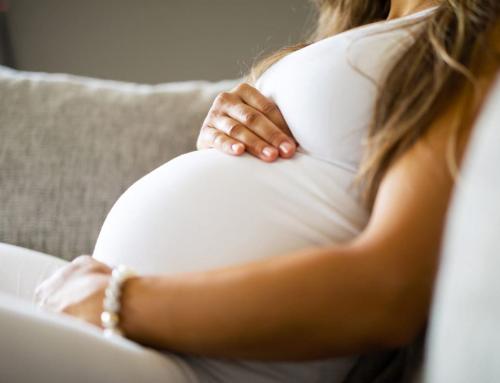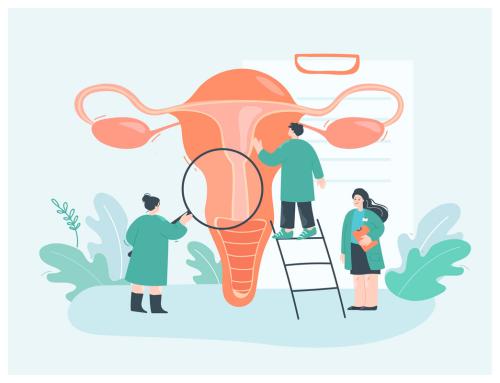Ovulation is the most fertile period for women. It typically occurs in the middle of the menstrual cycle, and since it involves many hormonal changes, it can be accompanied by discomfort such as breast, head, kidney, or abdominal pain.
During ovulation, some women may also experience light vaginal bleeding.
These symptoms, similar to premenstrual syndrome, are known as Mittelschmerz, a German word that means ‘middle pain.’
Intermenstrual syndrome: Is it normal to have ovarian pain after ovulation?
Yes. Experiencing moderate pain during ovulation and in the days following it is entirely normal.
In fact, discomfort associated with the so-called ‘intermenstrual’ syndrome affects 20% of the female population and is linked to hormonal changes and egg release.
As a general rule, ovulation-related symptoms begin 24-48 hours before and subside after one or two days.
However, some women may have ovarian and kidney pain for up to a week after ovulation.
Causes of ovarian pain before, during, and after ovulation
During ovulation, our reproductive organs, namely the ovaries, fallopian tubes, and uterus, are at their peak activity. That’s why discomfort associated with ovulation can occur throughout the process during which the egg detaches from the ovary and travels to the fallopian tube for fertilization.
The physical causes of ovarian pain after ovulation can be related to:
- Inflammation of the follicles in the ovaries.
- The release of the egg, which can cause it to break through the ovarian wall as it heads towards the fallopian tube, potentially causing pain.
- Contractions of the fallopian tubes. The fallopian tubes play a crucial role during ovulation, contracting to facilitate the egg’s movement. These movements can lead to ovarian and kidney pain after ovulation.
Furthermore, vaginal discharge after ovulation can change color for several reasons. In fact, it may become more transparent, whitish, and elastic with ovulation.
Ovarian pain after ovulation as a symptom of pregnancy
Ovarian pain after ovulation can be a symptom of pregnancy and is related to the embryo’s implantation in the uterine wall.
The ovarian pain during ovulation and the pain caused by embryo implantation are so similar that they can be confused, although there are some differences, with one of the most important being the timing of the discomfort.
In general, pain from ovulation typically occurs during the 48 hours before and after ovulation. However, embryo implantation can happen 7 to 9 days after fertilization, so the discomfort appears later.
While some women may not even be aware, many others experience mild to moderate discomfort during embryo implantation. In addition to the abdominal, ovarian, or kidney pain we’ve mentioned, this can include drowsiness, headaches, or swollen and tender breasts, most of which are related to hormonal changes.
Another symptom of embryo implantation is vaginal bleeding. This is a dark-colored discharge that, although mild, can last for several days.
The appearance of this bleeding along with the described discomfort can lead a woman to mistake embryo implantation for menstruation, even though the bleeding is usually much lighter.
Is it normal to have ovarian pain during pregnancy?
Ovarian pain related to pregnancy usually presents as mild abdominal tightness, which may extend throughout the first trimester but gradually decreases as the weeks pass.
This type of pain localized in the ovarian and kidney area can also occur in the second trimester, in the form of cramps that cause mild, short-lived pain when engaging in physical activity.
These minor contractions, known as Braxton Hicks contractions, are normal and indicate that the uterus is preparing for future labor.
Although ovarian pain during pregnancy, both in the first and second trimesters, is quite common, it is typically mild and sporadic. If it intensifies or becomes chronic, you should consult with your doctor.
Other causes of ovarian and kidney pain after ovulation
In addition to being one of the main symptoms of embryo implantation and, therefore, pregnancy, ovarian pain after ovulation can also be related to:
Ectopic pregnancy
An ectopic pregnancy is one that develops outside the uterus. These pregnancies occur because the fertilized egg, instead of traveling through the fallopian tubes to the uterus, attaches to another part of the body, typically the fallopian tubes or the abdomen.
After a positive pregnancy test, a woman may experience discomfort similar to that of ovulation or the days leading up to menstruation, which, in the case of an ectopic pregnancy, will not decrease but rather increase progressively.
Ectopic pregnancy can be very dangerous. Typically, these pregnancies are non-viable and must be terminated because if the embryo continues to grow inside the fallopian tube, it can rupture, leading to internal bleeding and severe infections in the woman.
Miscarriage
In this case, after a positive pregnancy test, when ovarian pain after ovulation is intense and accompanied by heavy vaginal bleeding, there is a possibility of a natural miscarriage.
In such cases, the pain is caused by the opening of the cervical canal and the expulsion of pregnancy products through uterine contractions, which can result in cramps and abdominal discomfort.
Pelvic Inflammatory Disease (PID)
Pelvic Inflammatory Disease (PID) is an inflammation of the upper female genital tract in the pelvic area, extending to the female genital organs (uterus, fallopian tubes, and ovaries).
Generally, PID is caused by a sexually transmitted infection (STI) such as chlamydia or gonorrhea.
If this infection is not properly treated, bacteria can spread from the vagina to the fallopian tubes, ovaries, and even the uterus.
Although PID can sometimes be nearly imperceptible, it can pose a risk to female fertility. However, some common symptoms of PID, such as chronic pelvic pain, can serve as an alert for this disease.
➔ You may be interested in: Possible causes of female infertility and how we diagnose them.
Other symptoms associated with Chronic Pelvic Inflammatory Disease include ovarian pain after ovulation, abundant and foul-smelling vaginal discharge, painful sexual intercourse (sometimes accompanied by abnormal uterine bleeding), fever, and pain or difficulty urinating.
Feeling discomfort in the ovaries during ovulation or in the days before menstruation is entirely normal. These are mild symptoms that you can identify yourself.
However, when these discomforts intensify or occur at other times in your menstrual cycle, such as in the days after ovulation, it’s important to consider their possible causes, including pregnancy.
Furthermore, if you are trying to conceive and experience ovarian pain after ovulation, our advice is to consult directly with your doctor to confirm whether you are pregnant. This way, you can prevent the risks of a possible ectopic pregnancy or miscarriage.



